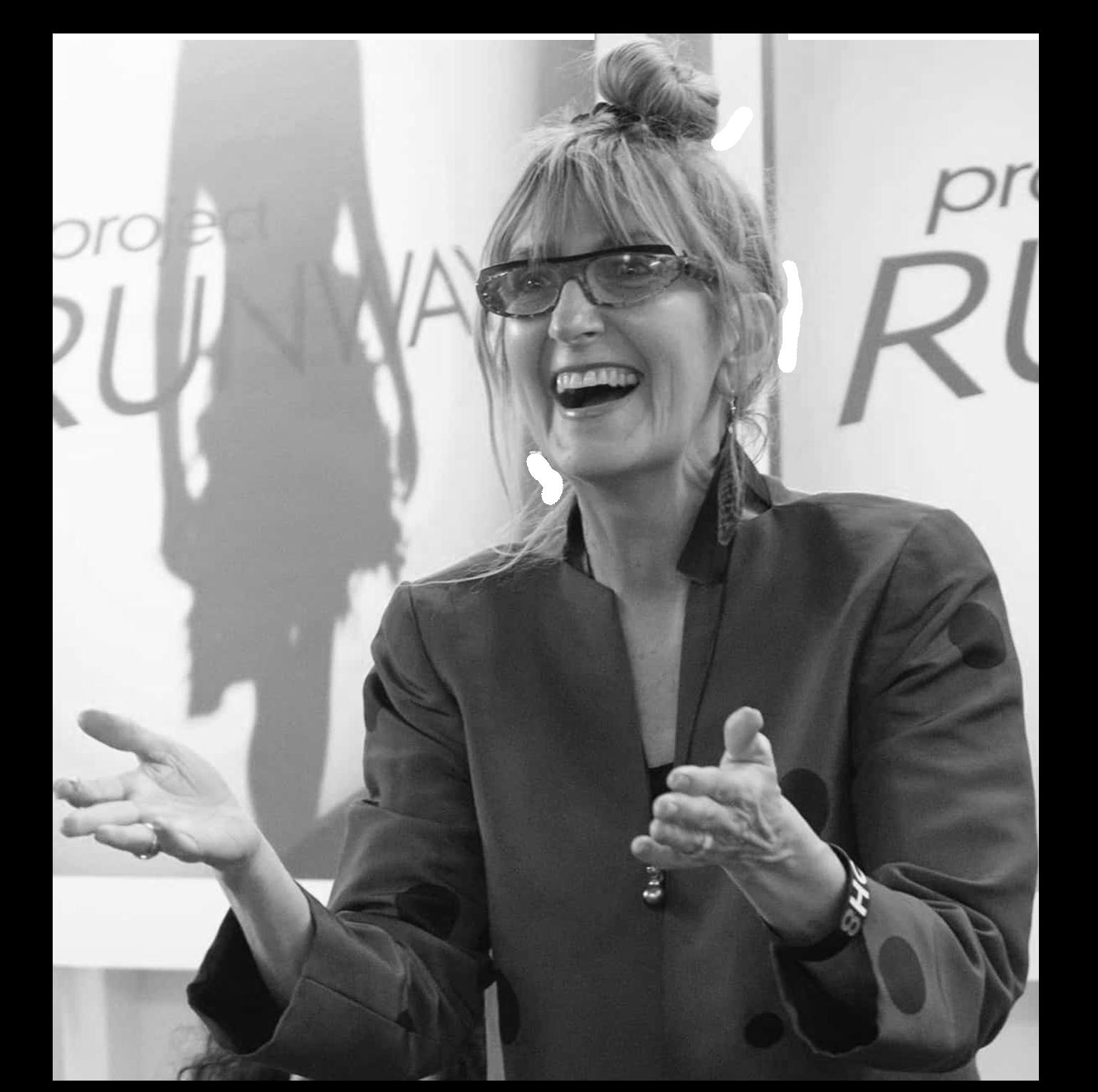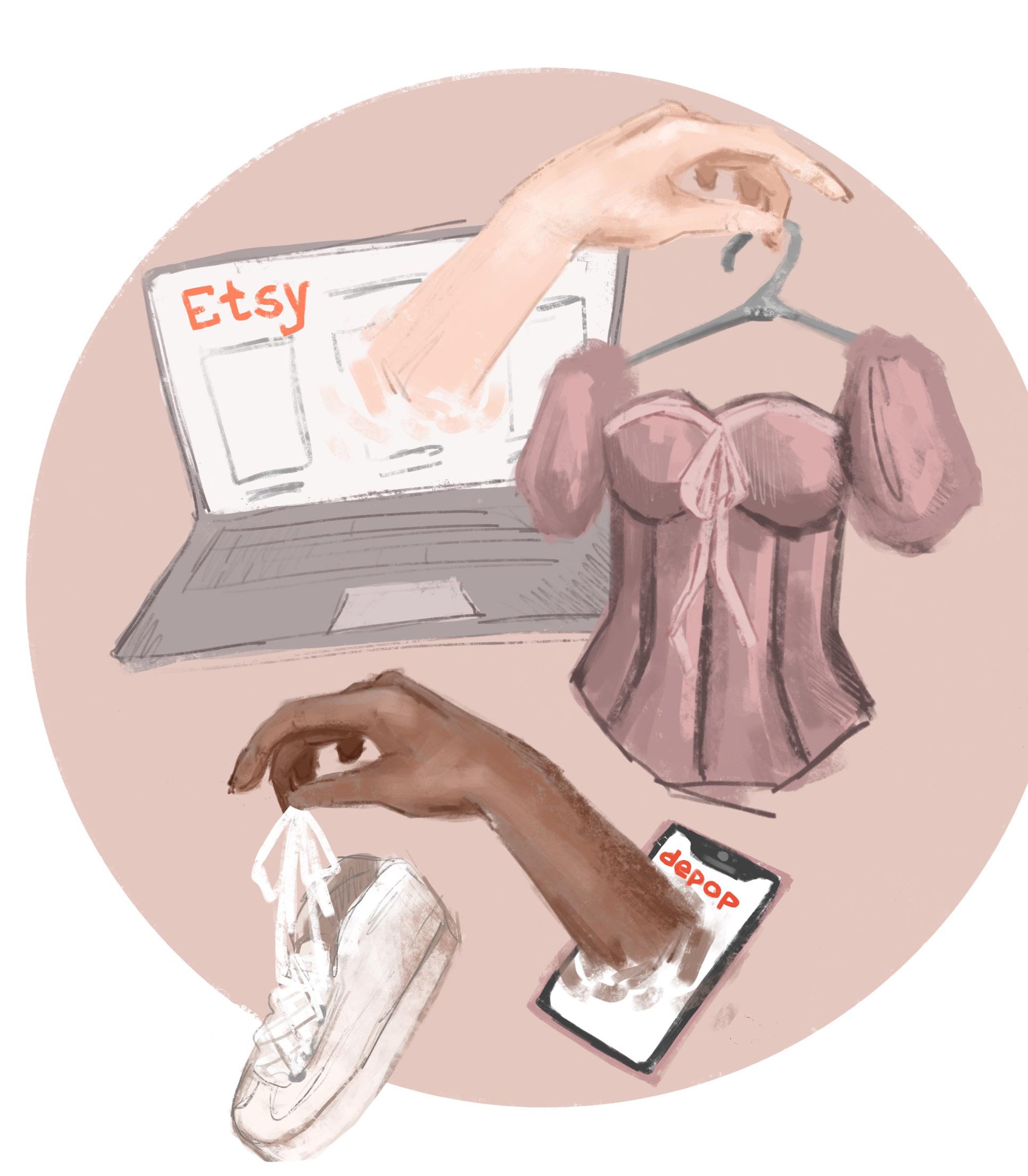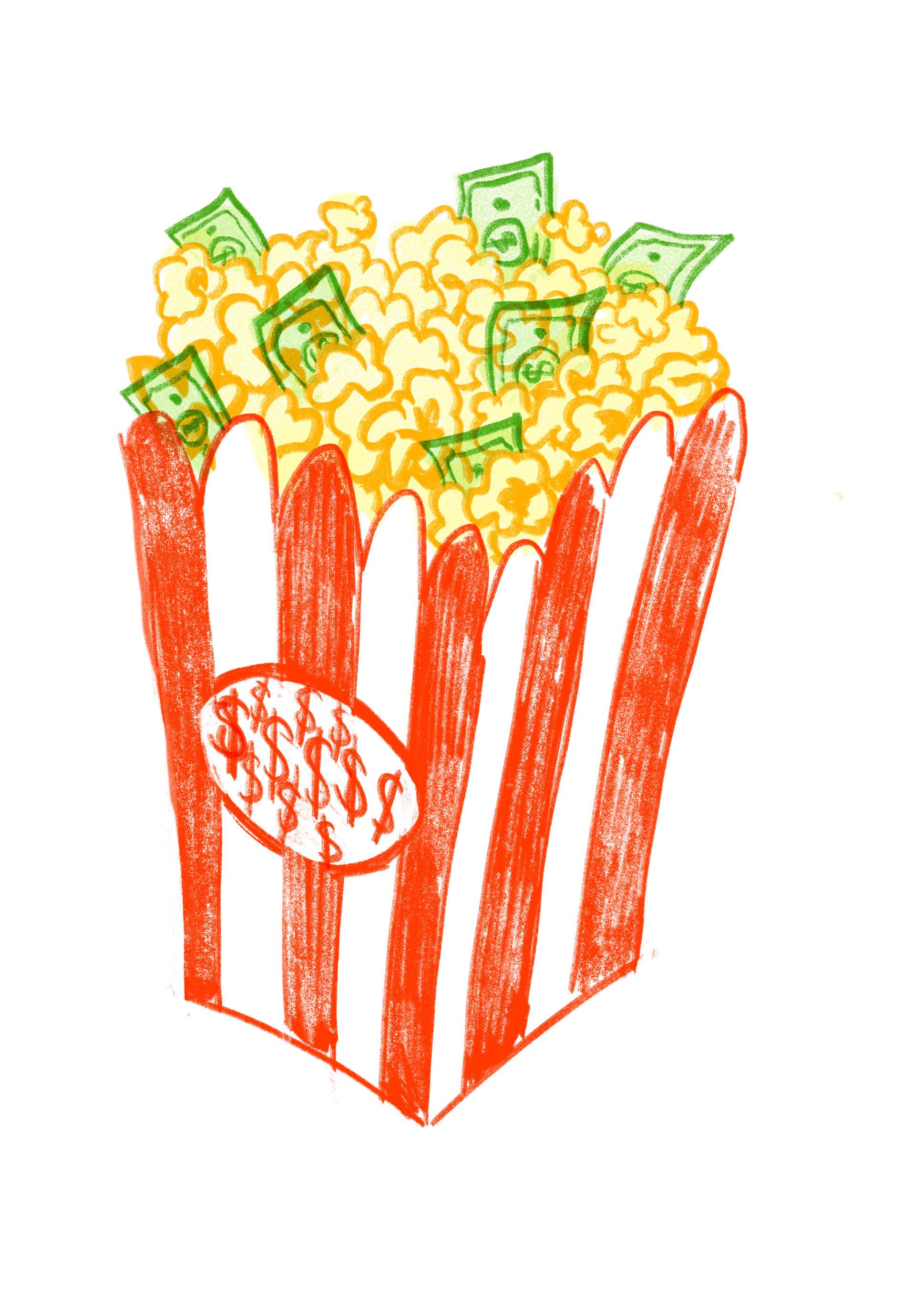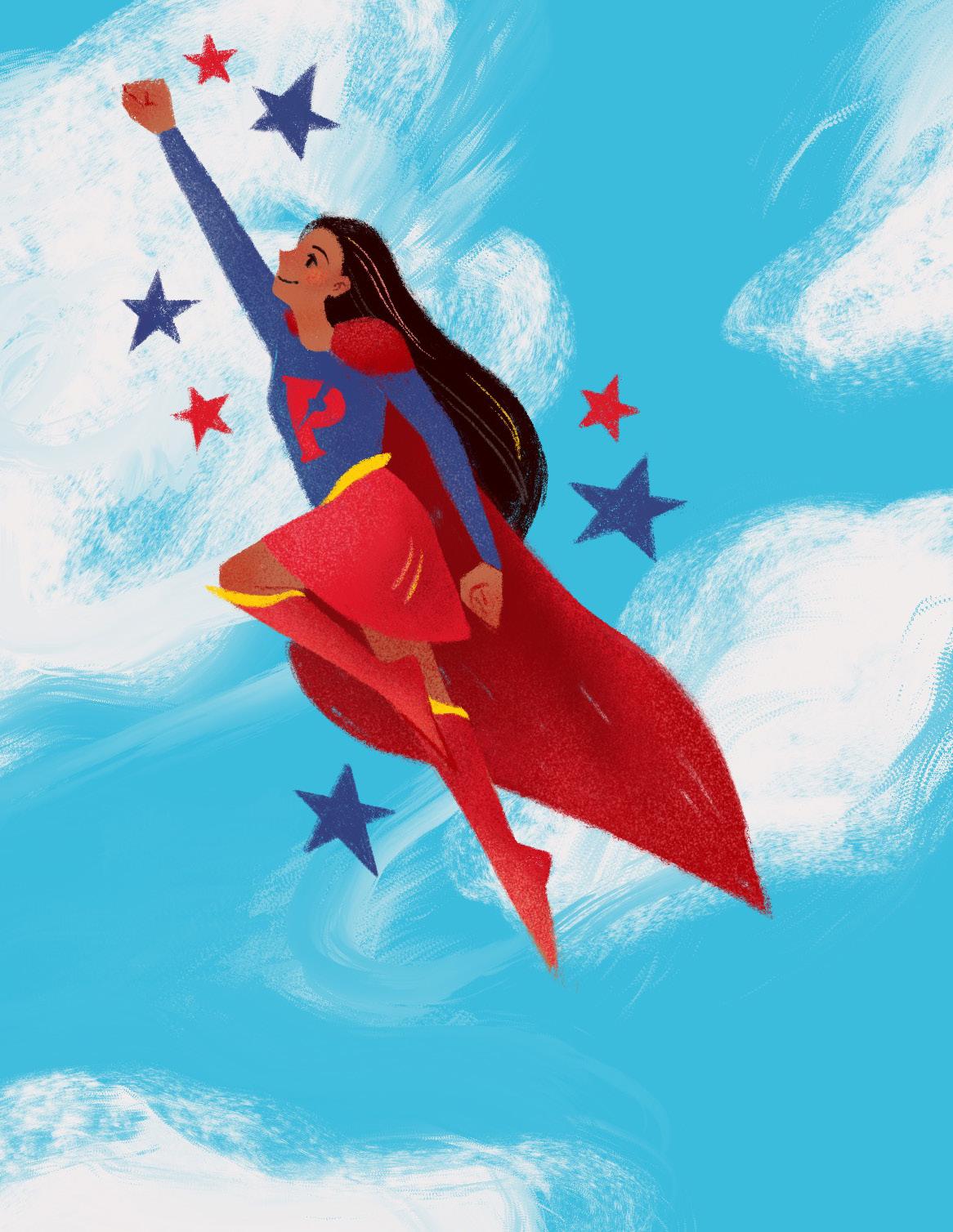
10 minute read
From Fashion Runway to NYFW, Phildadelphia Designer Nancy Volpe Beringer Brings Inclusivity to the Runway
from The WALK Spring 2020
by The WALK
FROM PROJECT RUNWAY TO NYFW, Philadelphia Designer Nancy Volpe Beringer Brings Inclusivity to the Runway
HOW VOLPE BERINGER’S LATE ARRIVAL INTO THE INDUSTRY — AND HER RESULTING ECLECTIC VARIETY OF LIFE EXPERIENCES — ARE SHAKING UP THE FASHION WORLD.
Advertisement
Whether on a reality TV show or in the comfort of her studio apartment, Philadelphia designer Nancy Volpe Beringer incorporates kindness into everything she does. Now, she challenges the fashion industry to do the same.
When thinking of the fashion industry, kindness typically isn’t the first thing that comes to mind. To consumers, the fashion industry is notorious for propagating unrealistic body expectations. In the manufacturing world, fast fashion necessitates from miserable sweatshop conditions and steep environmental costs. And for the designers, anyone in the industry will tell you fashion is a cutthroat business. Heidi Klum reminded us of this fact in every episode of Project Runway she hosted with her signature phrase: “As you know, in fashion, one day you’re in. And the next day, you’re out.”
But local Philadelphia designer and finalist of Bravo’s Project Runway Nancy Volpe Beringer staunchly challenges this disconnect. Volpe Beringer’s approach to fashion is rooted in kindness. She creates for everyone; no specific face or body exists in her mind as she designs. This inclusive approach is reflected in her aspirations as a designer. “My goal is to be a relevant designer,” Volpe Beringer tells me over Zoom while in her studio at home. “And that’s…empowering people through my fashions and through supporting their organizations.”
In her apartment near Benjamin Franklin Parkway, Volpe Beringer sits a few feet from her sewing machine, where she can gaze upon a variety of people—diverse in age, gender, ethnicity—race up the Rocky steps. For a designer, her outfit is subdued. She wears yoga pants and a bright orange sweatshirt that reads “new beginnings.” But her accessories, which include snakeskin glasses, mis-matched feather and star earrings, and a NOH8 [No Hate] bracelet, are a fun, unexpected, hodge-podge of style.
At 64 years old, Volpe Beringer became the oldest contestant ever on Project Runway. She didn’t even start designing until 61 years old. But her late arrival to the industry—and all the life experience that came with it—led her to become the groundbreaking designer she is today.
Volpe Beringer was raised in Levittown, Pennsylvania. Here, at the age of twelve, she learned to sew. She saved up money by ironing and mending people’s clothes at fourteen years old, and in high school, she stitched her own prom dresses and outfits to wear to football games. But as Volpe Beringer got older, she found herself reaching for the sewing needle less and less frequently. As a 30-year-old single mother of two young boys, she enrolled full time at Trenton State College (now The College of New Jersey) and graduated with a degree in business education. She worked primarily as a teacher, but after supplementing her income with several part-time and freelance jobs, Volpe Beringer traded in a teaching career to become an advocate for teachers’ and school employees’ rights.
However, throughout this journey, Volpe Beringer fell victim to cruel words and unkindness, both in her personal and professional relationships. She describes this experience as adult bullying. “Those words, they hurt,” she told me, reflecting on her past. “When you talk poorly about somebody behind their back, that’s bullying. And when you’re in the [same] room, and you don’t stand up or say something, you are now part of it. There are no innocent bystanders in bullying.” Though Volpe Beringer advocated for others during her career, she struggled to stand up for herself.
Longing for a creative outlet, Volpe Beringer decided to change careers again. At 3 a.m. on one sleepless night, the 57-year-old asked herself the life-changing question: “If I was young again, what would I want to learn?” “And so it was fashion design.”
If I was young again, what would I want to learn?
In the course of three years, Volpe Beringer moved to it was intentional or not, I was feeling left out, which was Philadelphia and obtained a Master of Science in Fashion triggering my past experiences as a victim of adult passive Design at Drexel University’s Antoinette Westphal College aggressive bullying,” she told me. of Media Arts & Design at the age of 61. During the program, During the fifth challenge, a team challenge, Volpe Volpe Beringer explored various techniques and design Beringer started to feel isolated. Whether or not the areas, from adaptive design, to evening wear, to children’s designers intentionally made her feel this way, Volpe wear. If classmates asked her to pin down what she wanted Beringer could not deny her feelings, which ignited painful to specialize in, she chose not to answer. memories from the past. But this time, she resolved to stand
“I said, ‘I don’t know. I know I want to be a relevant up for herself. designer,’” she explained to me. “And I told you what I “To two of the designers I did address how I felt. I meant by relevant, by giving back to the community.” didn’t accuse them of anything…but I did acknowledge
As it turns out, the world eagerly accepted Volpe my feelings of feeling left out and not respected,” she said. Beringer’s unconventional approach to fashion. Her designs “That was a milestone…When I was a victim, I could not do entered the racks of Philadelphia luxury boutique Joan that. I could advocate for all those other people, but I never Shepp. She furthered her studies at a renowned international could do that.” fashion school, London’s Central Saint Martins, and dressed As the weeks passed, Volpe Beringer stayed focused and rapper Tierra Whack at the 2019 Grammy Awards in a twotrue to her design aesthetic in the competitive environment. part ensemble consisting of a flowy By the eleventh challenge, she was gown with graphic art and a coat covered in a rainbow of feathers. When you grow up, the only designer left without a win. But it was in this challenge Amidst this success, she stayed true to her goal to give back to the you don’t always feel that Volpe Beringer shone the brightest. For this challenge, each community and became a teacher for the Refugee Women’s Textile included. You feel on the designer was asked to create a custom garment for a USA athlete. Initiative, sponsored by Mural Arts Philadelphia. outside…I think that’s Four of the athletes were to compete in the Olympics as well Her life was completely changed, however, when she showing in my fashion as two in the following summer’s Paralympics. received the phone call that she had been named a cast member how important it is to The concept of designing for a build that is not commonly seen for Bravo’s 18th season of Project Runway. be inclusive. I have the on the runway is an intimidating task for many designers. But when
As the oldest designer in the journey [that’s] allowed Tatyana McFadden, a gold-winning Paralympian who competes in show’s history, Volpe Beringer was already different. But little did she me to be the type of wheelchair track and field, entered the runway, Volpe Beringer literally realize how she would disrupt the fashion industry during the course designer that I am. jumped out of her seat, ecstatic. “I asked Tatyana, I said, did you see of the show. me staring at you?” she motioned
At the very beginning of the competition, Volpe to me with her hands cupped around her widened eyes Beringer expressed her inclusive instincts. When the like binoculars. “I was putting every piece of energy in the sixteen designers were tasked to create an innovative design universe. I need you.” inspired by the future of space exploration for their first The universe gave into her demands, and Volpe challenge, Volpe Beringer thought about the concept of Beringer was randomly selected to design for McFadden. unity. “Automatically I was thinking, the silhouettes didn’t She wanted to bring to life the athlete’s “fantasy” matter,” Volpe Beringer said. “For me, the future meant more ensemble, in both appearance and functionality. In 24 inclusion…we were one gender, we were one human…race, hours, Volpe Beringer created a custom evening look that got along. So attitude was the future for me, a positive including a full-length skirt, beaded embellished bustier, attitude.” Her partner for the team challenge, Marquise short train, long detachable train, removable overlay skirt Foster, didn’t quite share her eagerness for the idea, but the of novelty organza, and a matching hair piece. The design pair got along well. Scrapping Volpe Beringer’s initial idea, also featured Velcro panels so McFadden could easily put they compromised on creating coordinating outfits: a dress the dress on. Volpe Beringer embraced adaptive design, and a jumpsuit, both made of black neoprene. They were defined as “the re-engineering of clothing for people with safe. physical, cognitive, or sensory issues,” according to the
As the competition ensued, Volpe Beringer struggled Washington Post. with time constraints and choosing the right fabric, like the Volpe Beringer won the challenge. But more other designers. But she faced a unique challenge. “Whether importantly, she discovered her mission. “It was a one-day
I was putting every piece of energy in the universe. I need you.

challenge. And I had five pieces. And it was crazy. But it changed my life. It changed my life as a person but also as a designer.” Although her eagerness to be kind and inclusive was always simmering underneath, it took her until the eleventh challenge to realize this is what her destiny called for. All the time before she became a designer and all the hardships she faced in the interim made this possible.
“You know, [inclusive design] isn’t something I sat down and said ‘I am doing this.’ I think it just came from within,” she said. But “when you grow up, or through adulthood, you don’t always feel included. You feel on the outside…I think, having felt excluded, and on the outside, and felt different and not always fitting in, I think that’s showing in my fashions how important it is to be inclusive. Because of [my] age…I have the journey [that’s] allowed me to be the type of designer that I am.”
By the end of the competition, Volpe Beringer was one of four finalists who presented a collection at New York Fashion Week. Impacted by her experience with McFadden, she designed a collection titled “Sustain-Our-Ability,” which, along with zero waste design, promoted inclusivity with diverse models and adaptive design.
Now, about a month and a half after presenting at New York Fashion Week 2020, Volpe Beringer has settled back into her Philadelphia apartment. Quarantine brought her a new project of sewing masks for healthcare workers in Philadelphia. She also continues to gather research on how to make her clothing more adaptive and encourages individuals with unique fashion needs to contact her with suggestions.
Although Volpe Beringer didn’t walk away with the title of Project Runway winner, she is proud of her personal win— leaving a message for the fashion world about inclusivity. “That, to me, is a winner that’s going to survive past the show,” she said. Already this has started to prove true, as Volpe Beringer has received multiple messages lauding her approach from fans around the world.
As for the show, well, Volpe Beringer watched it. She was elated to see the joy in her face on screen as she pursued her passion as a fashion designer. This joy solidified a belief already formed in her mind: fashion was the right decision.
“The whole point of this journey was that…instead of surviving life…[I’d ask] what is your authentic life?” she said. “By answering that question, that is how I am living my life now.” And as for her goal in life? Well, “if there’s one thing I want to do,” she said, “[it is] to share kindness.”
BY: BEBE HODGES C’22








